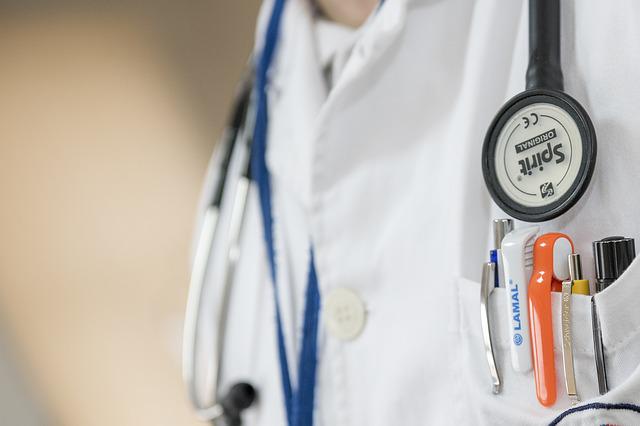
Your health care provider can use bacteria tests to diagnose an infection or determine your best treatment. These tests can also be used to detect antibiotic resistance. These tests help to keep patients healthy and prevent infection from occurring in the future.
Bacterial culture test (BC)
A bacterial culturing test is an examination of a blood sample, urine sample, or any other tissue in a laboratory to check if the bacteria present can cause an illness. The samples are sent to a lab, where experts use special techniques to make the cells multiply and grow. This lets them examine the cells under a microscope or test them for chemical reactions that can show they are sensitive to various types of antibiotics. This can take anywhere from one day to five depending on what type of bacteria you are dealing with.
Taking antibiotics for an infection you do not have can make it harder to treat. It may also spread to another person. So, it's important to get a bacterial culture before you start taking any antibiotics.
If your doctor suspects that you have a bacteria infection such as a cold or stomach bug, or bronchitis, pneumonia, etc., then a bacterial cultures is required. These infections, especially when severe or if they do not go away after taking antibiotics, can be very serious.

What is a BC?
A blood sample will be sent to the lab and placed onto a plate made of medical jellies called agar. This agar dish helps to detect bacteria which can lead to an infection. The agar plate will be placed in a warm, moist environment for several days to observe what microorganisms develop. The agar can be used as a tool to identify the best medicines to eliminate bacteria.
Dilution test
Dilution tests are a way to test bacteria using multiple wells or tubes that contain a certain concentration of antibiotic. The concentration of an antibiotic in a first well is diluted into a smaller concentration in a second well.
Many different types exist of dilution testing. Some of the most common include broth microdilution, agar dilution, and selective dilution.
They can be useful but also confusing. It's therefore important to know what these tests mean and how they should be interpreted.
PCR, ELISA or swab testing are ways to determine what bacteria is present in your body. These tests are based on the detection and antibacterial antibodies of bacteria DNA. The DNA of the bacteria is compared to other species of bacteria in order to determine what type of bacterium is being detected.

Some of these tests can identify a single bacteria from a swab, or a small amount fluid. Others, such as a whole genome sequencing-based bacterial typing test, can identify bacteria from an entire sample, like skin or blood.
Researchers have developed an innovative bacterial test that can determine if a respiratory illness is caused by a viral or bacterial infection within one hour. It's great news for doctors who struggle to diagnose a patient because they can't distinguish between a viral and a bacteria infection.
FAQ
What are the various health care services available?
Patients must know that they can obtain quality healthcare at any hour. Whether you need an urgent appointment or a routine check-up, we're here to help.
We offer many different types of appointments, including walk-in clinics, same-day surgery, emergency department visits, and outpatient procedures. For those who live outside of our clinic, we also offer home care visits. We will ensure that you get prompt treatment at the nearest hospital if you aren't comfortable visiting our clinic.
Our team includes dentists and doctors as well pharmacists and nurses. We aim to ensure that each visit is as convenient and painless as possible.
What is the difference in public and private health?
In this context, both terms refer to the decisions made by policymakers or legislators to create policies that affect how we deliver health services. For example, the decision to build a new hospital may be decided locally, regionally, or nationally. The same goes for the decision whether to require employers provide health insurance. This can be done by local, national or regional officials.
Who is responsible to ensure public health?
Public health is an issue that affects all levels of government. Local governments control roads, schools, parks, and recreation facilities. Laws and regulations regarding food safety and workplace safety are provided by the federal and state governments.
What impact will it have on the healthcare industry if there is no Medicare
Medicare is an entitlement program that provides financial assistance to low-income individuals and families who cannot afford their premiums. This program benefits more than 40,000,000 Americans.
Millions would be without insurance coverage, as some private insurers won't offer policies to individuals with pre-existing medical conditions.
Statistics
- About 14 percent of Americans have chronic kidney disease. (rasmussen.edu)
- Over the first twenty-five years of this transformation, government contributions to healthcare expenditures have dropped from 36% to 15%, with the burden of managing this decrease falling largely on patients. (en.wikipedia.org)
- For the most part, that's true—over 80 percent of patients are over the age of 65. (rasmussen.edu)
- For instance, Chinese hospital charges tend toward 50% for drugs, another major percentage for equipment, and a small percentage for healthcare professional fees. (en.wikipedia.org)
- The healthcare sector is one of the largest and most complex in the U.S. economy, accounting for 18% of gross domestic product (GDP) in 2020.1 (investopedia.com)
External Links
How To
What are the Key Segments in the Healthcare Industry's Industry?
The healthcare industry includes the following key segments: diagnostics/biotechnology, pharmaceuticals/diagnostics, therapeutics/health information technology, medical device, and equipment.
Defibrillators are blood pressure monitors, blood pressure monitors, stethoscopes or ultrasound machines that can be used to diagnose, prevent, or treat diseases. These products are used to diagnose and prevent or treat disease.
Pharmaceuticals are medicines prescribed to relieve symptoms or treat disease. You can find examples such as antibiotics, antihistamines or contraceptives.
Diagnostics are tests done by laboratories to determine illness or injury. Examples include blood tests, urine samples, CT scans, MRI scans, X-rays, etc.
Biotechnology refers the process of creating useful substances from living organisms such as bacteria. There are many examples, including vaccines, insulin, or enzymes.
Therapeutics are medical treatments that treat diseases or alleviate symptoms. They may include drugs, radiation therapy, or surgical interventions.
Health information technology includes computer software programs that help physicians, and their teams manage data related to patient records. It helps them keep track of which medications they're taking, when they should take them, and whether or not they are working properly.
Anything used to diagnose or treat illnesses and conditions, such as diabetes, is medical equipment. Dialysis machines include pacemakers, ventilators and operating tables.